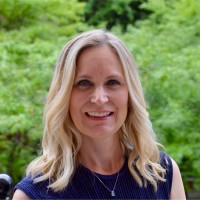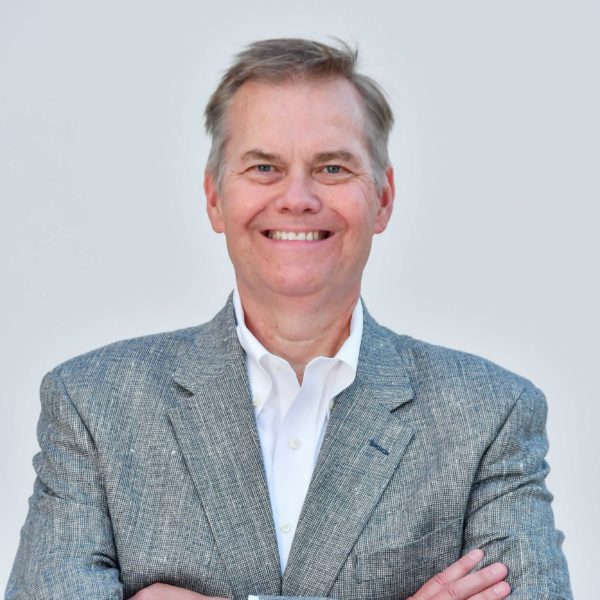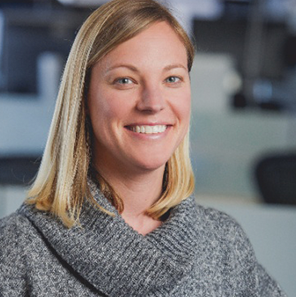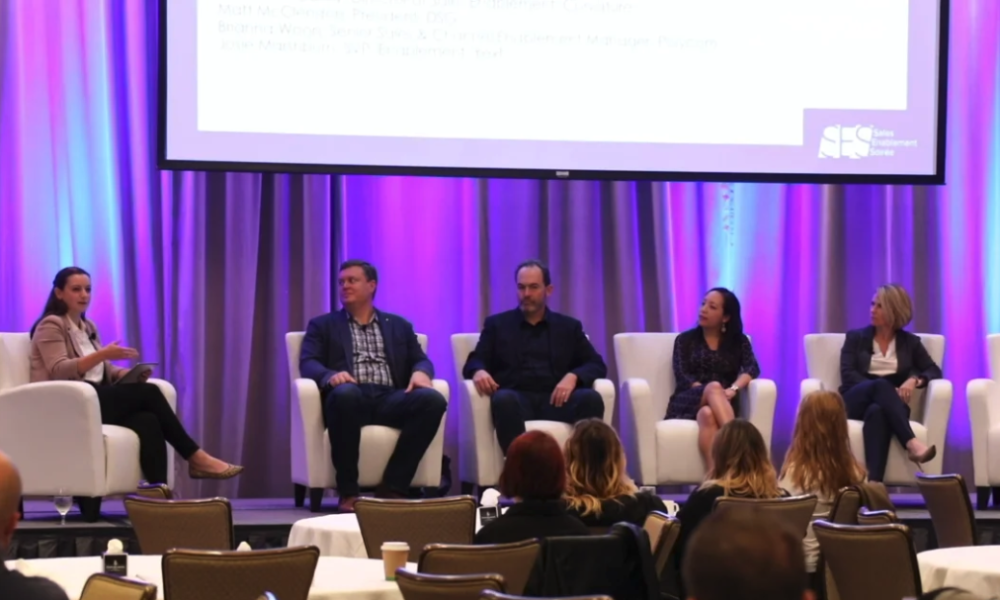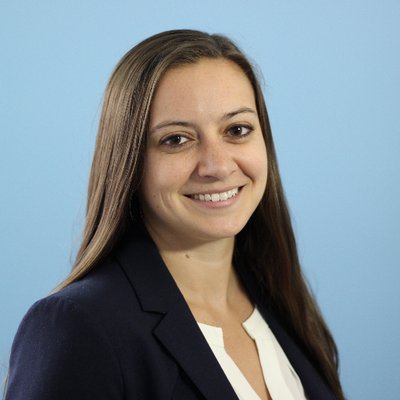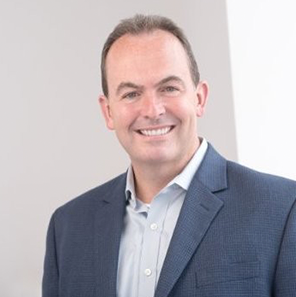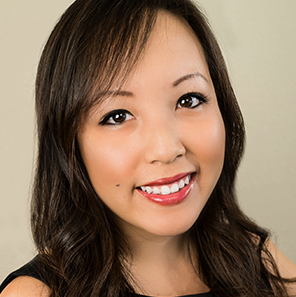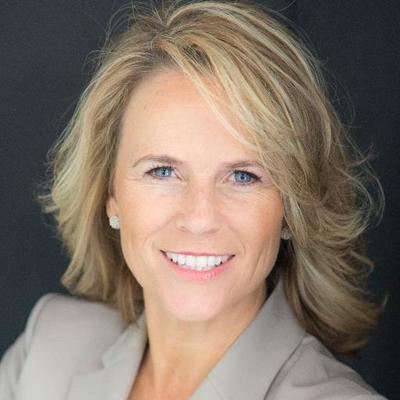Episode 48: Darlene Samer on Leadership Development for Sales Managers
2.8K Views | 22 Min Read
Shawnna Sumaoang: Hi, and welcome to the Sales Enablement PRO podcast. I am Shawnna Sumaoang. Sales enablement is a constantly evolving space, and we’re here to help professionals stay up to date on the latest trends and best practices so they can be more effective in their jobs. Today I’m excited to have Darlene Samer, the director of sales enablement at Yelp, with us. Darlene, I’d love for you to just introduce yourself, your title, and your organization.
Darlene Samer: Fabulous. Thanks so much for having me today. I currently am the director of sales enablement for the multi-location space at Yelp, and as many of us know, Yelp is a primary platform dedicated to connecting people with great local businesses. What I do there is I run a fabulous team and we are focused on everything from the moment our new reps walk in the door with onboarding to continuing education right through to sales leadership work. At the end of the day, my goal is to bring together my team and connect with all sorts of other different stakeholders in our business to provide great results, not only for us at Yelp, but also for the clients that we engage with and their customers on a day-to-day basis.
SS: That’s excellent. Thank you, Darlene. So, I actually want to kick us off and start talking around the topic of sales readiness, since you mentioned onboarding and getting your reps up to speed. From your perspective, what are key components of a successful sales readiness program?
DS: Well, I think you could ask 10 different people and get 10 different variations because the world of sales readiness programs is constantly evolving. It also depends on how you’re defining it. So, I think the probably the most straightforward components that are trending today, and what I’m experiencing and I would’ve experienced in previous roles, I’d say there are four key things. It revolves around being social, being action-oriented, being very connected, and being event or experience-driven.
So, there’s a social component. We know that at every single point of any sales readiness program, that in sales enablement, we are the facilitators and the orchestrators of connecting people, connecting people with other reps, with veteran reps, with executives, with clients. And there has to be a social element to it because they are learning firsthand by doing. The more practical and tactical we can be by getting connected with other people, that’s going to make an exponential difference.
I would say the next piece that I mentioned around action, every single piece of content or class or coaching session or resource has to be action-oriented. The business doesn’t have a tolerance anymore for us to be doing significant navel-gazing. But instead, we need to say for everything that we design and develop, what is the action we want our reps or our internal people to be taking externally to make a difference that’s relevant to our clients? And when we don’t link that together for them, sometimes they don’t know what to do. So, I would say that’s a big part of it.
The next piece is linked to any type of sales readiness program. All of the moving parts have to be connected and seamless to the end-user, to the people that we’re talking to and bringing on board. At the end of the day, I think we have an extreme obligation to protect our reps’ time. They don’t care if a training comes from HR or something comes in from marketing or a new product update or it’s another new piece of communication from leadership. We have to link all of those things together and make sure it’s effective when we are in fact getting somebody up to speed to perform the best they can in their role.
The last piece I would say for sales readiness is a series of, “let’s learn this, then do this.” Let’s prove this, and then do that. We have an opportunity to create every single thing that we do into an experience or an event matters. I always liken it to that feeling you get just before you go to a concert; you’re excited. Or just before a major holiday, you have that feeling that you’re excited. Not saying we can mirror that perfectly in the world of sales readiness, but we want people to come, not because they’ve been “voluntold” to show up, but because they really want to be there and they can’t wait to see what’s behind the curtain or behind the click on the screen. So, social action linked to events or experiences are incredibly important in sales readiness programs.
SS: I love those four components. Then, how do you take those four components and really scale it effectively across teams, role types, and even regions?
DS: Yeah. I think scaling is so critical right now. My first thought would be when we want to scale effectively and when we want to take things to global regions or to different groups and parts of a country, I think it’s really important to focus on several things. I would say the top four things would be for every single thing that you’re doing, ensure that it aligns with the metrics or the objectives or the KPIs or the focus areas of the groups that we’re aligned to. Without that, I’m not sure how we can make a significant impact.
The second thing is that there’s always a way to, if we’re scaling and we think on a global basis, or even on a regional basis or by industry, there’s a way to do business appropriately. There are certain languages, there are ways to engage. There are ways that our reps need to show up in order to make the connections that they need to. And I think that’s an important part to scale. That doesn’t often come naturally, and we have to be giving our reps the support they need to do well there.
I think there’s an ordering, as well. Our markets tell us what to do so often, and I think whenever we’re rolling out any type of sales readiness across teams, we have to say, where’s our biggest market impact? Where do we need to make a difference? Or it could be worse, the lowest risk environment where we need to scrub this and get it really well and to a really good place before we take it to other areas. So, the main question I ask is, what order do we have to roll out this stuff in order that it gets us the results in the way we want it? And in the timeframe that we want it in.
I would say the last piece is that when we’re rolling these programs out, the cast of characters or the people involved in making this happen from managers to different stakeholder teams, to reps themselves and the managers, is that there’s going to be different skill levels across these groups. Can we modify, can we adjust our content to adapt for the different skills that these people have in order to do the best work that we can?
SS: I love that. So, when you introduced yourself, you also talked about sales leadership development, and I think that is a critical role for sales enablement because I think keeping great talent within your organization is absolutely essential in today’s market and today’s talent market. How can sales enablement better prepare and develop sales leaders within the organization?
DS: This is probably a topic I could talk about for 20 minutes. My background, I have a Master’s in leadership and training, and so I think it set me up so well to do work in the sales space, but specifically with sales leaders. I think our businesses are moving so fast and I strongly would argue there’s this constantness that people want. “Oh, I want to be a manager. I want to be a leader. I want next, I want more.” And I firmly believe, I don’t think we should move current individual contributors or people into promotions until they’ve developed baseline skill sets or baseline knowledge. Why that’s important is that it is about learning on the job, but I think we need to give them at least a basic foundation of skills in order to be successful so that they can develop a great reputation on their team. The moment they walk in the door, they can start turning out results pretty quickly. It’s not a long process. But we have to be able to say confidently, can this leader demonstrate some core, basic capabilities?
I think the second piece — I’ve seen this time and time again — there’s this inner desire that “I want to be a manager.” But when I ask people, “why do you want to be a leader — at Yelp or anywhere else?” What is that? And if people can’t give me an answer that feels unbelievably real, “I want to lead people because I care about their development,” or “I would love to see people learn and grow”, or “this is something I’ve always aspired to”, it’s often potentially for the wrong reasons. One of those things where they need to get very connected with is what is in it for them that they are so inspired by and passionate about? And I think we can prepare our leaders better that way.
The last piece is, I think we have an obligation to let sales leaders or sales leader want-to-be’s, what this role is and what this role isn’t. And every company is going to define that slightly differently. Some might have more of an administrative, strategic, planning, coaching, teaching. I don’t know what those things could be, but it’s important for an organization to define what this job is and what this job is about. Because the last I checked, sometimes managers get into the role and they say, “I didn’t know it was this tough. I’m dealing with all sorts of employee issues and performance issues and time off and where are my reps?” I think it’s very important to be bring the clarity to the role in advance as well.
SS: I couldn’t agree more. And I love the fact that you take the time to actually develop them on the onset. I think that also helps kind of just build stronger partnerships with them long-term. And I think, particularly with frontline sales managers, that partnership is absolutely critical with sales enablement and in order to drive adoption and behavior change for sales enablement initiatives. What are some strategies for sales enablement to build effective partnerships with those frontline sales managers?
DS: This is probably one of the most favorite parts of my role in that it’s probably one of the areas where I put a lot of focus. It comes naturally to me, but I also put a lot of focus on it. I would say there are three things to think about. Number one would be clarity. When we’re engaging with our sales managers, sometimes I don’t even think they know what the heck we do. What is our role, how are we there to help? And I think providing them with that clarity, and it might feel a little bit educational in nature, or you’re giving examples of how you can help because sometimes I don’t think they truly know how to leverage sales enablement or people in our similar types of roles. So, extreme clarity is important and over time continue to refine and say, “see, this is how I could help you, and these are ways that I can make an impact to your team.”
I think the second thing is we’re here to drive business results, often sales results at the end of the day. But what happens is that there’s a correlation between the quality of our relationships and the results that we’re going to get. So, when I scan across my team, one of the expectations that I bring to them is I asked them about the quality of their relationships. I’m not expecting them to have relationships that are sitting at A+, where they know all of the inner workings of these sales managers and leaders. But let’s take our relationships from a B- to a B+. What is going on for these managers and leaders inside of work and outside of work can directly correlate to the results that they’re going to get? So, how can we work closely on those relationships? Because we can move mountains when we’re trying to roll out our initiatives and get focused and have expectations of them if the relationship is in fact intact.
I would say the last piece is around active support. There will be moments and times when our sales managers might push back, may disagree, or may have an alternative view on something that we want to do. I would say that’s the number one thing that’s made a difference to develop a partnership. Our only goal is to ensure that they’re onboard and they’re actively supporting what we’re doing and they’re buffering that to their teams, if in fact it wasn’t their first choice. To actively support something doesn’t mean it’s your first choice, but it means that I’m going to get behind and not put up roadblocks or get in your way of what you’re trying to do because we have all got to figure this out together.
SS: Those are really three great recommendations for that. Now, we’ve talked a lot to this point about kind of internally what sales enablement’s responsible for. I’d like to look at this through a slightly different lens, because I know that customer-centricity is becoming more and more important to sales enablement practitioners. From your perspective, why is that an important area of focus?
DS: If I could write the book on sales enablement, it would start with, without your customer you have nothing. Customer-centricity is so critical. Every day I wake up, I want to see more of this. I wanted to see more of it five years ago, 10 years ago, and I want to see more of it in the future of my career. It has to be non-negotiable. We have to be relevant to our clients and what does that actually mean if we don’t fully appreciate and understand our client’s goals, their concerns, what they care about, how they make money, what their customers’ customers are doing.
Then, we are putting ourselves at an immediate disadvantage if we don’t understand their inner workings of what goes on behind the scenes in terms of how they buy, the politics that go on behind the scenes. What are those indicators that tell us we’re in fact on the path of consideration? It will directly impact our results in a less than positive way. So, flip that around and we owe it to our bottom-line results to do more. Supporting and equipping our reps on an ongoing basis to know, yes, we have a sales process, but what are those buying signals? Where are we in the path of consideration that’s going to tell us that we’re spending our time smartly when we deeply get locked into the inner workings of our clients?
SS: Absolutely. And a little more concretely, how can sales enablement help enhance that customer experience and really improve buyer engagement through customer-centricity in the, in that kind of customer-centric approach?
DS: Yeah, I think one of the best ways to do it in the most tactical way that would be relevant to so many people is that we have a sales process. Most companies have a sales process, and if you don’t have one, it’s awesome to get one. And what does that sales process do? It’s about end-to-end, from the moment we have an idea, bring our client or customer along the journey and in fact deliver value. So often, our sales process has a strong internal focus.
My practical encouragement would be, when you’re building your sales process, what would happen if you in fact flipped that and didn’t even start with your sales process, but you started with your customer buying process or the way that your customer wants to engage, the way your customer wants to receive things? What if we started there and what if we gave it white-glove treatment? From the moment we are actually reaching out to jumping on a first call, to having some initial meetings where we’re learning more about them, to the moment we’re making a recommendation to the moment we close the deal. Get something set up or keep them and try to gather more value over time. What are those small moments or points of insertion along the way where we can be making the most difference in a way that makes sense and matters to our clients. We constantly have to ask, is this relevant and how well will it be received? And if we can’t answer those questions from the customer’s point of view, then I think we’re leaving money on the table and bigger deals and opportunities are being left to the wayside.
SS: Absolutely. I think sales enablement generally is a very cross-functional role. But with regards to customer-centricity, what are some of the cross-functional partners that are really important for sales enablement to partner with and work closely on? How best would you recommend they work together?
DS: Oh my gosh, relationships are at the core of it all. I would say there are six groups that tend to come together or variations of these groups. You would typically have marketing, a go-to-market team that might link off of their product business or revenue operations could bucket in the same world. We would have HR, human resources or people operations. Then you’ve got your whole IT tech infrastructure teams as well. The headline is that each of those specific groups have something very particular that they’re mandated to focus on, something that they have people with OKR hours or metrics on their back that they’re trying to accomplish. And sales enablement has an obligation to work thoughtfully across those groups to say, what are those core initiatives that we’re both individually working on or what are those potential things collectively that we can be working on?
A very simple example would be, we like to get very close to our clients. There’s the customer-centric side of things. Okay, well what does that take? We want to make great relationships with our clients. That’s a business goal. Great. So, what does that take? It takes our reps to be able to track in our CRM what kind of interests they have. Restaurants they like, or concerts or places they like to travel. That also requires that we connect with not only our IT tech team to be able to put these types of things in our CRM. This means that we also have to connect with marketing. Who’s going to take that information, do something with it, and get us connected with our clients? So, right there, you’ve got three to four groups coming together all to produce one output, which is let’s get more connected and closer to our clients and develop better relationships. I think our radar has to go up in every single conversation and meeting we have and simply ask one question: who else cares? And by asking who else cares, that’s going to tip you off to go and send a ping, pick up the phone, or send a message to somebody else in this group because I guarantee you nothing exists in isolation.
SS: Absolutely. Darlene, thank you so much. This podcast has contained so many actionable takeaways for our audience. I really appreciate you taking the time to talk to us today.
DS: Thank you so much. It’s been a pleasure. All we can do is focus every day, do our best, and continue to evolve.
SS: Absolutely. I couldn’t agree more. To our audience, thank you for listening. For more insights, tips, and expertise from sales enablement leaders, visit salesenablement.pro. If there’s something you’d like to share or a topic you’d like to learn more about, please let us know. We’d love to hear from you.

